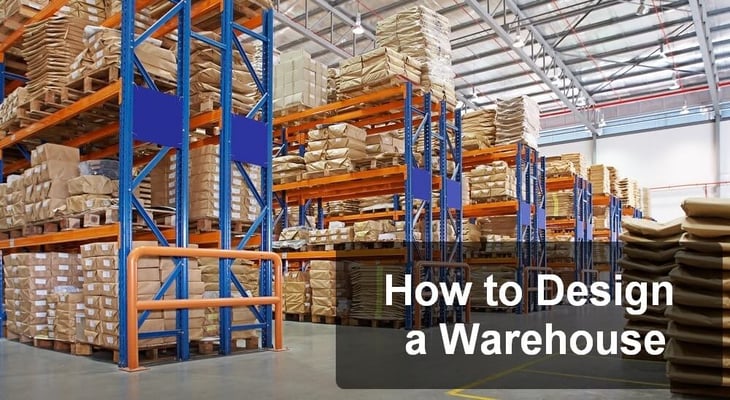
Setting up a warehouse can seem like an impossible task, especially if you’ve never had to design one before. There are some things you need to know before installing all the parts and moving in the employees. If you’re thinking about designing a warehouse, you should consider things like the location, and the design of the interior. You want to make sure everything is the right place to maximize production, and prevent accidents. Before you run out to design your warehouse, here are some things you should consider.
Location
With every successful business, the main key has been location, location, location. If you find a nice spot of land for your warehouse, you want to make sure it is close to highways, and your customer base. It doesn’t make sense to have your warehouse in Tennessee if the majority of your customer base is in the Northwest. When you’re looking for a place to have your warehouse, you should look for:
- High-Service Network Areas
- Operating a Low-Cost Network
- Designing a Superior Network Compared to the Competition
While your goals may differ, you should find the best location for your customers to get your products quickly. After all, we live in a much faster world where things move quickly.
The FAST Factors
When you’re done locating the perfect spot for your warehouse, you can focus on designing the interior. This is a crucial step to maximizing profanely and production. Using the FAST factors will make your warehouse more efficient, safe, and ready for production. If you don’t know what fast stands for, it is:
- F – Flow
- A – Accessibility
- S – Space
- T – Throughput
These factors are crucial to designing a warehouse. Here is how you can use this little piece of advice.
- Flow
- When you’re designing a warehouse, you want to make sure everything flows together. Just like a river, you want to make operations smooth. You should keep each step of the activities close to each other, which each activity before and after providing a smooth operation. You want to spread out the flow a little bit so things don’t get clogged up, and the materials are close by. You want to minimize movements and disruptions, and using a flowing strategy will keep everything running in order.
- Accessibility
- Everything should be accessible, including for the loading dock. You can create a staging area, which will hold a lot of the products that are brought in for packaging. Everything should run quickly, and you don’t need to worry about shelf life, since most products have a long one. However, you should make sure everything can be reached in the fewest number of steps, allowing everything to run smoothly.
- Space
- Space is the most important asset to a warehouse, and not using it wisely can hinder production. You want to make sure you have more space dedicated to storage and stock processing purposes. Offices should be minimal, as well as the pallet storage, and other small operations. You can prepare your warehouse, take measurements, and ensure everything will fit precisely where it needs to be. It is like Tetris, in that it every small piece of equipment should fit in a specific spot. One thing you can do eventually, is build onto the outside of the building to increase space, as demanded.
- Throughput
- The throughput includes the categories of product parting, the nature of the product, and how fast it goes through the flow. Different dimensions of the products can hinder progress, and should be considered when you’re designing your warehouse. When you’re dealing with a lot of products, especially when demand is high, you want to make sure the design of the warehouse won’t slow down production. Even when things are slow, you can come up with different ways to improve the flow and production. Designing a warehouse should account for the highest demand, so that way, even if it doesn’t quite meet the demand, production will be at a maximum, and everything can be tracked accordingly.
There are a lot of factors to consider when you’re designing a warehouse. You need a place that is suitable for customers to receive the products quickly. There are many places you need to look for when you’re choosing a location, but you can find the right area for your employees and customers.
Not only should you consider the location, but you want to make sure that production can work efficiently and safely. You want to dedicate as much space as possible to staging areas, and production machines to ensure everything will fit. Using the FAST factors will help your warehouse run perfectly, maximize production, and result in lower operation costs. It’s imperative to draw up a plan before you start moving in machines and furniture, and if you need help, you can always find help.











